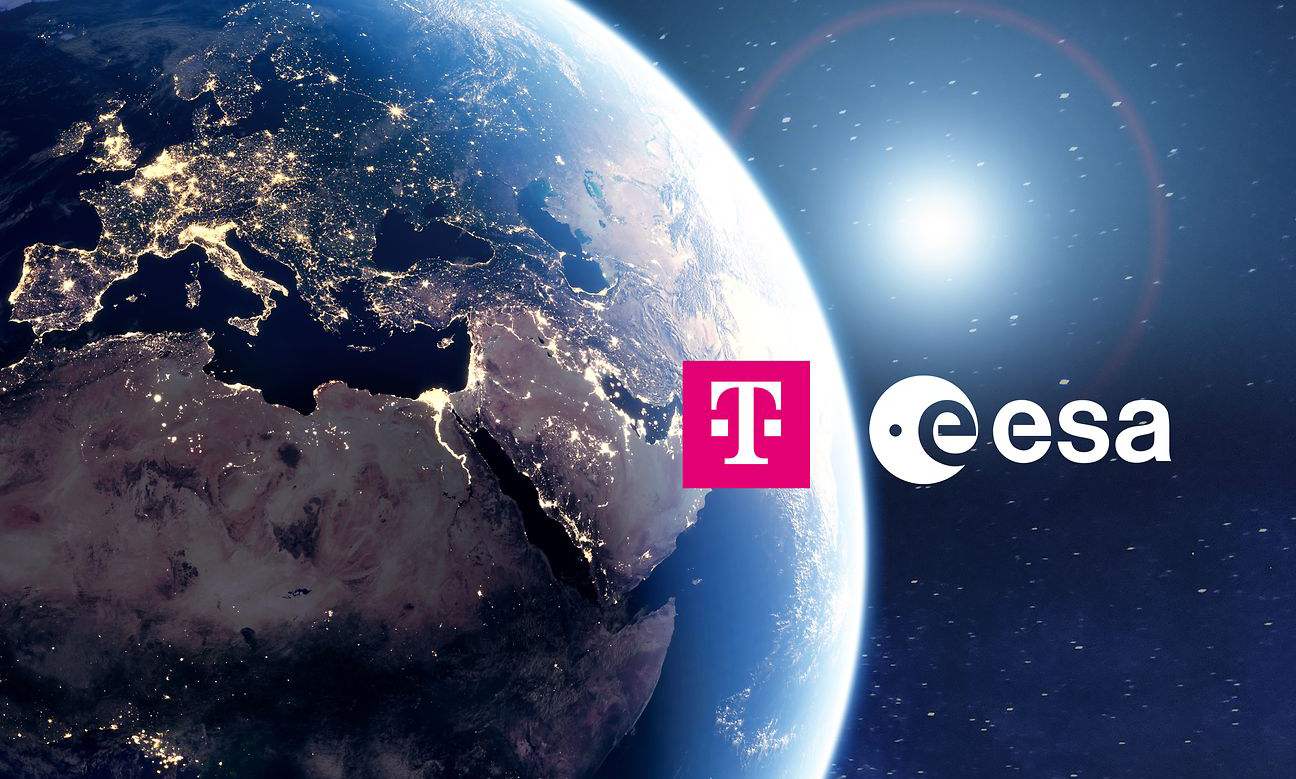2.3.2023
- Joint initiative for more secure networks with borderless connectivity
- Memorandum of understanding signed to improve integration of satellites
- DT achieves worldwide first 5G-connection from stratosphere backhauled over Intelsat's satellite network, with tests done in Croatia
Cooperation between Deutsche Telekom and the European Space Agency with a world premiere in Croatia

The European Space Agency (ESA) and Deutsche Telekom will jointly work to enable seamless connectivity from terrestrial networks, from the sky or from above. At Mobile World Congress 2023 in Barcelona, the partners agreed in a memorandum of understanding (MoU) to work together on the hybrid networks of the future. Their plan: more resilient and secure connectivity solutions to answer future communication needs. It is especially important in the event of possible disruption to parts of the network technology on the ground. In such a case a non-terrestrial network from satellites or from the stratosphere could be used to seamlessly maintain contact with the smartphones of the affected people. Or from rescue teams on the ground, taking over from the conventional ground infrastructure that has been affected by a disaster.
“We have a clear ambition: to bring connectivity to everyone at any-time and anyplace. Connection alternatives, such as satellites, play a crucial role in complementing our terrestrial network to ensure service continuity. The collaboration with ESA is an important step in laying the technological foundations for a strengthened network resilience based on the combination of terrestrial and satellite communications. This will improve the accessibility of our network for anyone who needs to stay connected,” said Claudia Nemat, Member of the Deutsche Telekom Board of Management responsible for Technology and Innovation.
Javier Benedicto, acting ESA Director of Telecommunications and Integrated Applications, said: “ESA supports the future of connectivity where satellites are integrated with terrestrial technologies to provide ubiquitous, seamless and secure connectivity for all. We are delighted to have formed a partnership with Deutsche Telekom to advance relevant technologies in this field. ESA supports European and Canadian industries to foster innovation and compete globally.”
World premiere: 5G all the way to space and back
Together with partners such as the satellite specialists at Intelsat, Deutsche Telekom has demonstrated the technical feasibility of this new challenge. In the process, Deutsche Telekom has shown that connection from the ground is increasingly possible with conventional smartphones and, for example, 5G technology.
Now Deutsche Telekom and its partners have taken a decisive step forward. During tests in Croatian region of Istria, a5G connection was achieved seamlessly across different network layers into the stratosphere, space and back for the first time worldwide. In the process, the mobile service provided from the stratosphere took the backhaul path via satellite and its ground infrastructure to the backbone network or directly to the ground station. The data transfer started with a standard 5G cell phone over a 20 MHz channel. In the airspace above Pula, Deutsche Telekom achieved data speeds of up to 200 Mbit/s in February 2023.
This proves that hybrid communications over terrestrial and non-terrestrial networks can provide the highest level of resilience. Intelsat has a proven track record of providing connectivity in the wake of natural disasters. Now, using a satellite network – like Intelsat's multi-orbit, unified network, provides exactly the fallback option that will help victims of disasters in extreme situations. Intelsat’s multi-orbit solution allows for seamless, uninterrupted use while switching from high altitude platform stations (HAPS) to geosynchronous satellites if the situation requires change. Requesting help, giving a report on the situation on the ground, and thus facilitating the rescue forces' operations - all this now seems more feasible in extreme cases.
"As part of Deutsche Telekom, Croatian Telecom is part of a group that literally pushes technological boundaries. Today we are working on innovative, unique solutions that will play a significant role in the connectivity in the future and closing the digital gap . The biggest challenge in this regard is the sparse population in many areas, and the diversity and complexity of the terrain, which make network building in Croatia very demanding. Nevertheless, we continuously strive to find solutions and systematically work to bring new generation networks to all parts of Croatia. Enabling 5G/6G mobile coverage from the stratosphere via direct satellite transmission to the device is a segment where we’re definitely leading the connectivity revolution. I am proud of the role of our, HT experts in the planning and engineering of access networks have had in recent revolutionary approach with the world-wide tests for the first time done in Croatia. With this we have once again slightly but with determination opened the door of the future in Croatia, and we won’t stop there as we will continue to work with our partners", said Boris Drilo, Member of the Management Board and CTIO of Croatian Telecom.
Stitching the various layers of networks
Non-terrestrial networks (NTNs) are communications networks with components in space and in the air. These include antenna platforms in the stratosphere, known as HAPS. These can be free-floating high-altitude balloons, airships or powered gliders that can even run on solar energy and hydrogen power. In space, on the other hand, it is satellites, such as the Intelsat-38 used in the trial. To integrate these new forms of networks into existing networks, these disparate communications technologies must be orchestrated. They thus become multi-dimensional networks, with seamless switch across different layers spanning the space, the sky and the earth, is the ultimate ambition of Deutsche Telekom with this partnership.